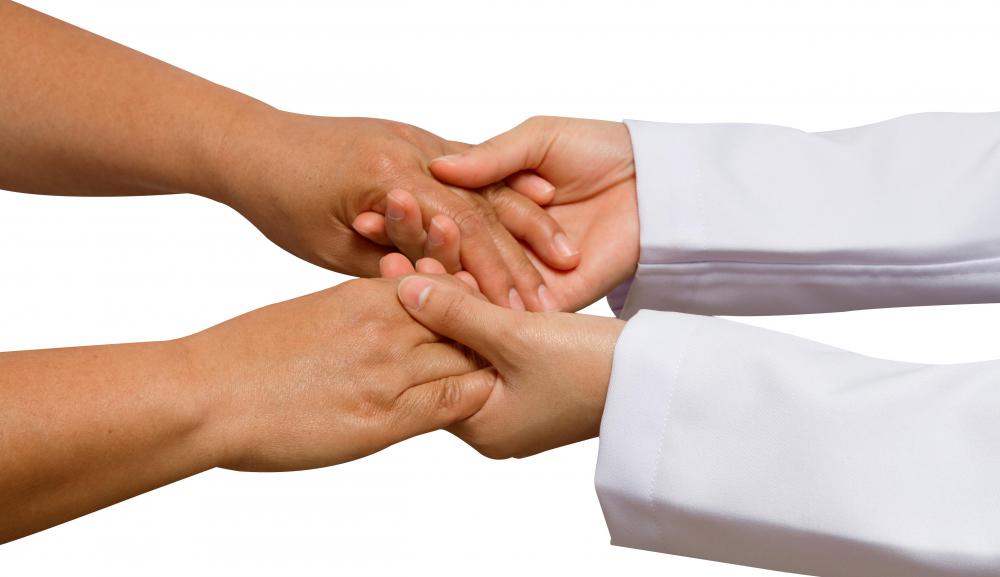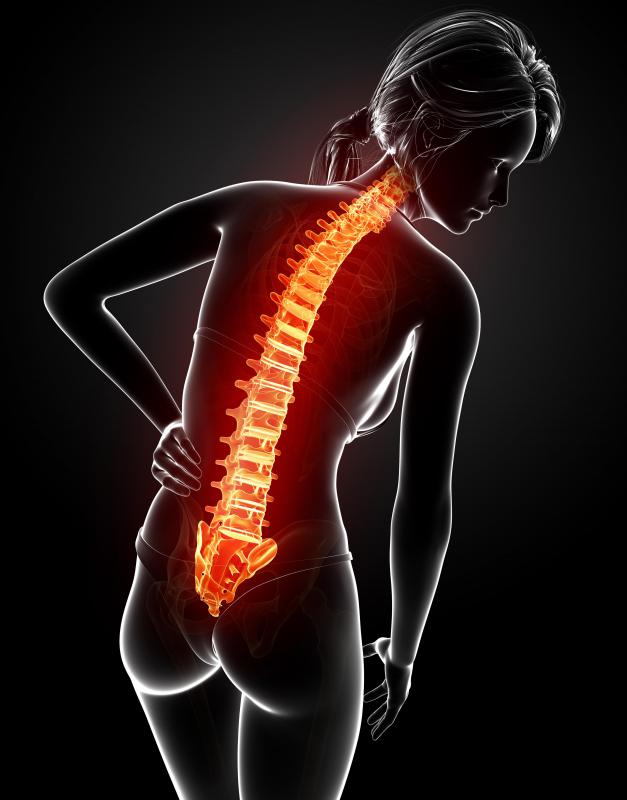At WiseGEEK, we're committed to delivering accurate, trustworthy information. Our expert-authored content is rigorously fact-checked and sourced from credible authorities. Discover how we uphold the highest standards in providing you with reliable knowledge.
What is Klumpke's Palsy?
Klumpke's palsy, sometimes called Dejerine-Klumpke palsy, involves damage to the nerves which supply the small muscles of the hand. It results in the hand having a clawed appearance. Nerve supply to the arm and hand comes from what is known as the brachial plexus, a network formed from nerve roots in the spinal cord. Injuries leading to Klumpke's palsy can occur in motor vehicle accidents, falls, or during a difficult labor which leads to a baby being born with the condition.
Spinal nerves originate from vertebrae in the neck and join together as the brachial plexus, passing under the collarbone and into the arm. A typical scenario leading to a Klumpke's palsy injury might involve a fall from a height, where something is grasped to stop the fall. This leads to tearing of one of the spinal nerves, known as the first thoracic nerve. Fibers from this nerve travel through the brachial plexus and eventually supply muscles in the hand.

The resulting paralysis of all the small muscles in the hand causes the characteristic claw-like appearance associated with Klumpke's palsy. As fibers from the first thoracic nerve also supply sensation to the skin of the inner arm, this area becomes numb to the touch. Sometimes the area of numbness is increased, including the sides of the hand and first two fingers. This indicates that another of the nerves that form the brachial plexus has been damaged, known as the eighth cervical nerve.

During labor, damage to the baby's brachial plexus can occur if the child is unusually large, or if there is a difficult presentation such as a breech birth. Sometimes, after the head has emerged, there can be a problem delivering the shoulder. Pulling on the shoulder or pressure on the arm can lead to a newborn having Klumpke's palsy. The affected arm will usually be bent and held against the body, and the baby will be unable to move it.

In newborns, mild cases of Klumpke's palsy will often recover with massage and exercises. If there is no improvement after three months, surgery may be carried out to repair the nerves. In adults, Klumpke's palsy is a rare condition. Physiotherapy may be helpful, along with bracing of muscles to prevent them from contracting permanently. If there is no improvement, surgery might be used to graft nerves and muscles, enabling the hand to function normally.
AS FEATURED ON:
AS FEATURED ON:


















Discuss this Article
Post your comments